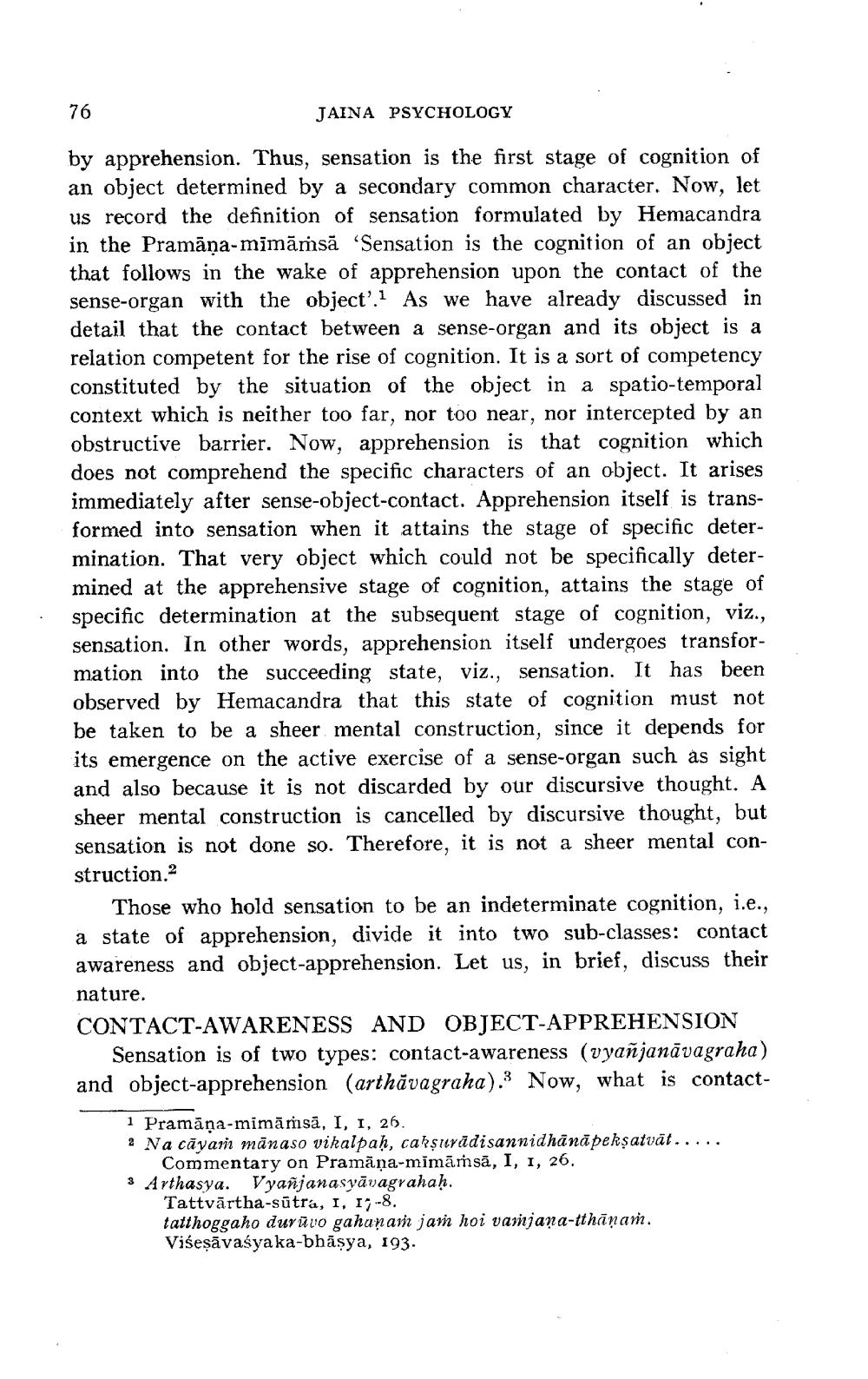________________
76
JAINA PSYCHOLOGY
by apprehension. Thus, sensation is the first stage of cognition of an object determined by a secondary common character. Now, let us record the definition of sensation formulated by Hemacandra in the Pramāna-mīmāmsā 'Sensation is the cognition of an object that follows in the wake of apprehension upon the contact of the sense-organ with the object'.1 As we have already discussed in detail that the contact between a sense-organ and its object is a relation competent for the rise of cognition. It is a sort of competency constituted by the situation of the object in a spatio-temporal context which is neither too far, nor too near, nor intercepted by an obstructive barrier. Now, apprehension is that cognition which does not comprehend the specific characters of an object. It arises immediately after sense-object-contact. Apprehension itself is transformed into sensation when it attains the stage of specific determination. That very object which could not be specifically determined at the apprehensive stage of cognition, attains the stage of specific determination at the subsequent stage of cognition, viz., sensation. In other words, apprehension itself undergoes transformation into the succeeding state, viz., sensation. It has been observed by Hemacandra that this state of cognition must not be taken to be a sheer mental construction, since it depends for its emergence on the active exercise of a sense-organ such as sight and also because it is not discarded by our discursive thought. A sheer mental construction is cancelled by discursive thought, but sensation is not done so. Therefore, it is not a sheer mental construction.2
Those who hold sensation to be an indeterminate cognition, i.e., a state of apprehension, divide it into two sub-classes: contact awareness and object-apprehension. Let us, in brief, discuss their nature. CONTACT-AWARENESS AND OBJECT-APPREHENSION
Sensation is of two types: contact-awareness (vyañjanāvagraha) and object-apprehension (arthāvagraha).? Now, what is contact
1 Pramāņa-mimārsā, I, I, 26. 2 Na cāyar mānaso vikalpaḥ, cakşurădisannidhānāpekşatvät.....
Commentary on Pramāņa-mimāṁsā, I, I, 26. 3 Arthasya Vyañjanas vāvagrahaḥ.
Tattvārtha-sūtra, I, 17-8. tatthoggaho duv üvo gahanam jam hoi varjana-tthāņań. Višeşāvasya ka-bhāşya, 193.




